Do you know that non-curling and elastic Tunisian crochet ribbing exists? In this article I show you 6 methods (plus 1 bonus) on how to make some of these, including a video that shows all the steps.
When you want to add a non curling border to your Tunisian crochet projects, to make a hat with a nice, cozy and elastic brim, or when you want to add some design elements to your projects, you need to know which Tunisian crochet ribbing is the best for your needs.
In this article, we explore 6 types of ribbing in Tunisian crochet.
There are more, so leave your suggestions in the comments if you’d like another type of Tunisian crochet ribbing to be added to this article.
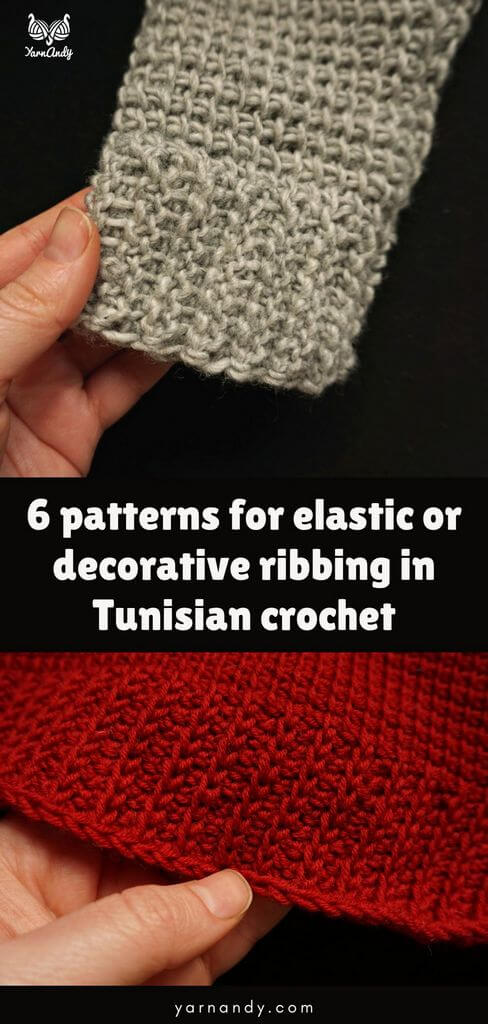
About Tunisian crochet ribbing
Tunisian crochet creates thick and warm fabric. It is not especially known for its elasticity.
Some stitch combinations create fabric that can be elastic across the row (vertically) and some of these we will explore in this article.
Some other stitch combinations are non-curling and can be used as decorative ribbing on the edge of projects, such as for cuffs and necklines.
And lastly, there are some stitch combinations that look pretty, almost like knit ribbing, but that sadly still curl, so you’ll have to block the fabric to keep the appearance of ribbing.
We’ll explore these in detail and you can also watch how to make all of these stitch combinations in the video tutorials linked below, one each for right handed and left handed makers.
To make these stitch patterns, you will need to be familiar with the following stitches and techniques:
- Foundations in Tunisian crochet: right handed and left handed;
- Tss or Tunisian simple stitch: right handed and left handed;
- Tps or Tunisian purl stitch: right handed and left handed;
- Tks or Tunisian knit stitch: right handed and left handed (coming soon);
- Trps or Tunisian reverse purl stitch: right handed and left handed.
Tunisian crochet ribbing version 1 – Alternating rows of Tps and Tss
This version is simple and pretty and used successfully in the Crimson drop beanie pattern to create a non-curling edge.
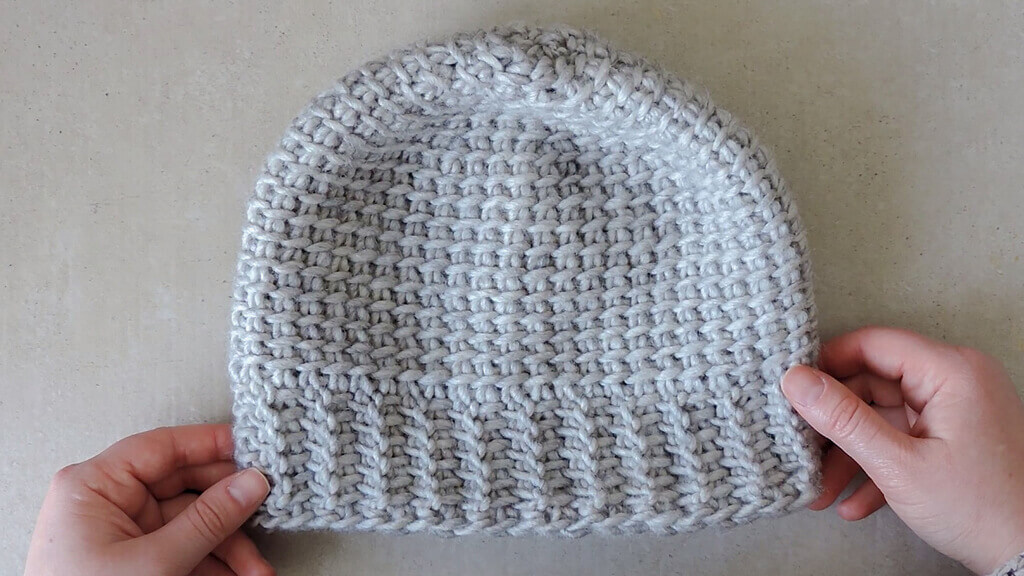
It is worked sideways along the project and is slightly elastic, forming raised ridges on the rows with purl stitches.
If you add this to a project after the fact, you will use short row return pass, which consists of only “yarn over and pull through 2 loops on the hook”.
The pattern is simple:
Row 1. Foundation Tss, as many as you need or want.
Row 2. Tps across, last stitch, return pass
Row 3. Tss across, last stitch, return pass
Repeat Rows 2-3 across the side of your project.
The last stitch in this case can be a loop picked up in the side of a project.
In the case of the beanie, you continue with other stitches to create the main part and crown of the hat.
Tunisian crochet ribbing version 2 – Alternating Tps and Tss
This type of ribbing uses the same two stitches as those used previously, but they are stacked, instead of worked in rows.
This type of ribbing is used in the Sporeprint sweater pattern, where it is incorporated in all the pattern pieces. In the body, it is worked at the beginning, since the pieces are worked bottom-up.
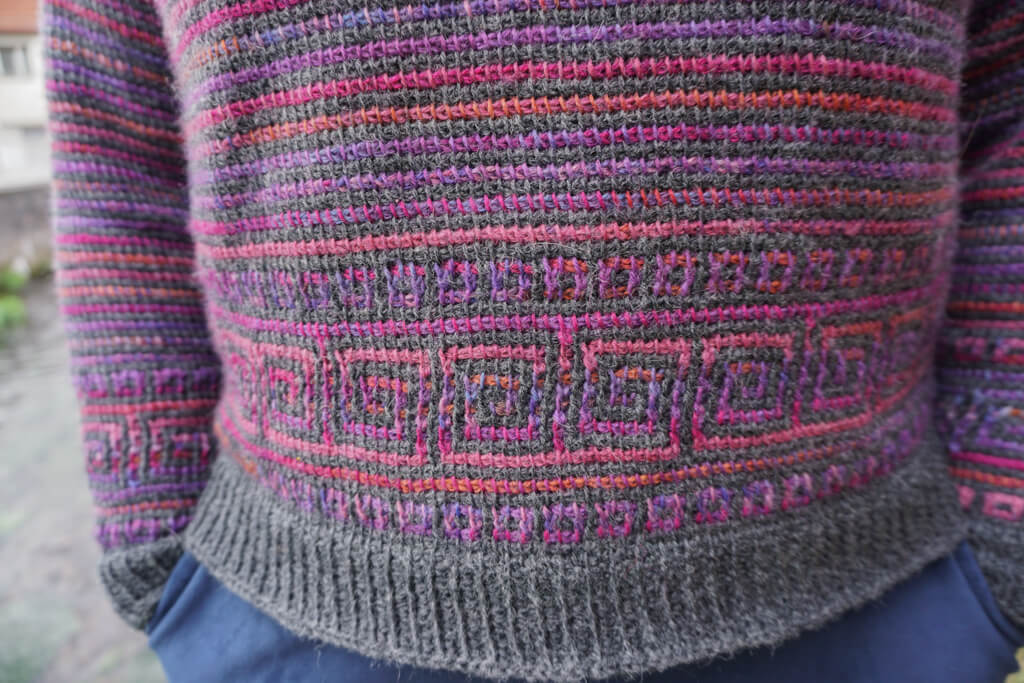
In the sleeves, you can make the ribbing at the beginning (bottom-up) or at the end (top-down), depending on the sleeve construction that you choose..
In each row you will have alternating stitches and the pattern repeat consists of just one row.
Row 1. Foundation Tss, as many as you need or want, ideally an odd number.
Row 2. Repeat [1 Tss, 1 Tps] across, last stitch, return pass
Repeat Row 2 until the ribbing is tall enough and continue your project, or bind off in pattern, as needed.
Tunisian crochet ribbing version 3 – Alternating Tks and Tps
This version is similar to the one before, but now we replace the Tunisian simple stitches with Tunisian knit stitches.
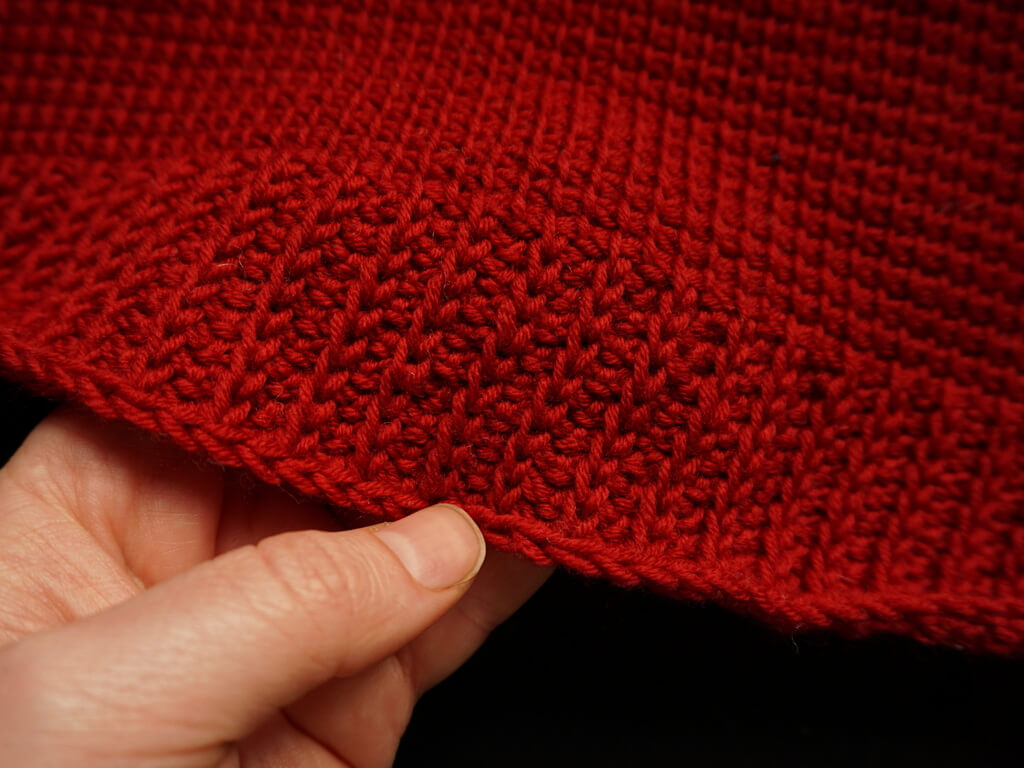
Knit stitches in Tunisian crochet are shorter than other stitches and make this type of ribbing curl slightly.
Only use this type of ribbing with yarn you are confident you can block successfully, for example acrylic that you can steam block, or wool that you wet block.
Row 1. Foundation Tss, as many as you need or want, ideally an odd number.
Row 2. Repeat [1 Tks, 1 Tps] across, last stitch, return pass
Repeat Row 2 until the ribbing is tall enough and continue your project, or bind off in pattern, as needed.
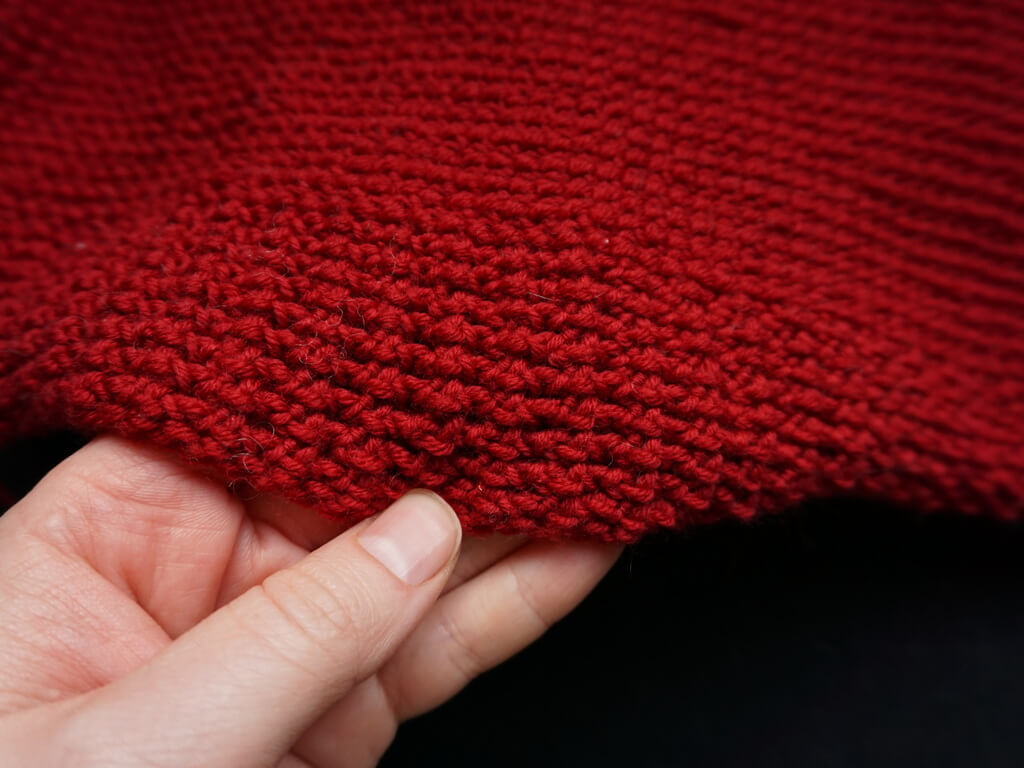
Tunisian crochet ribbing version 4 – Alternating 2 Tks and 2 Tps
In this variation, you will create something similar to 2×2 rib in knitting.
It doesn’t look, nor behave like 2×2 ribbing from knitting because the opposite of Tks is not Tps, nor vice-versa.
Here is the pattern for the original ribbing in the video:
Row 1. Foundation Tss, as many as you need or want, ideally a multiple of 4+1.
Row 2. Repeat [2 Tks, 2 Tps] across, last stitch, return pass
Repeat Row 2 as many times as needed to make the ribbing tall enough for your needs.
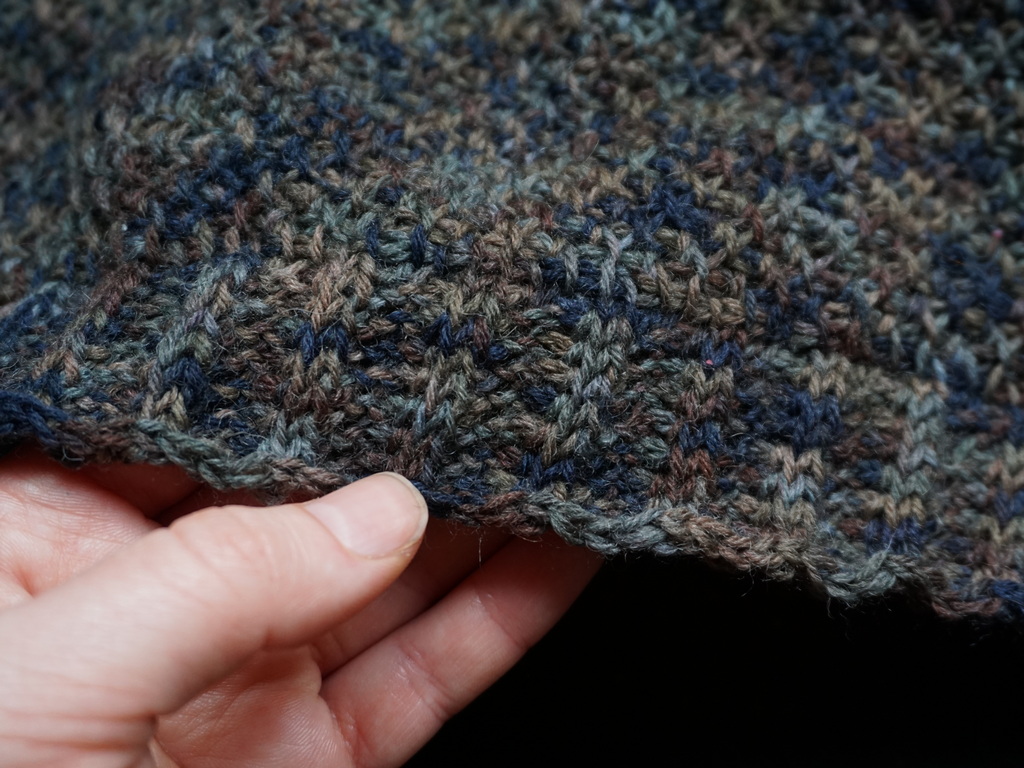
Bonus type of ribbing
A variation that might look more similar to 2×2 ribbing from knitting is the following.
Row 1. Foundation Tss, as many as you need or want, ideally a multiple of 4+1.
Row 2. Repeat [3 Tks, 1 Tps] across, last stitch, return pass
Repeat Row 2 as many times as needed to make the ribbing tall enough for your needs.
This variation looks more like 2×2 ribbing because some of the loops in Tks get lost in the Tunisian crochet fabric, and the Tps is quite wide, so one is sufficient to compensate for the width of the 3 Tks.
I don’t yet have a project that uses this type of ribbing, so I spent several hours making one up.
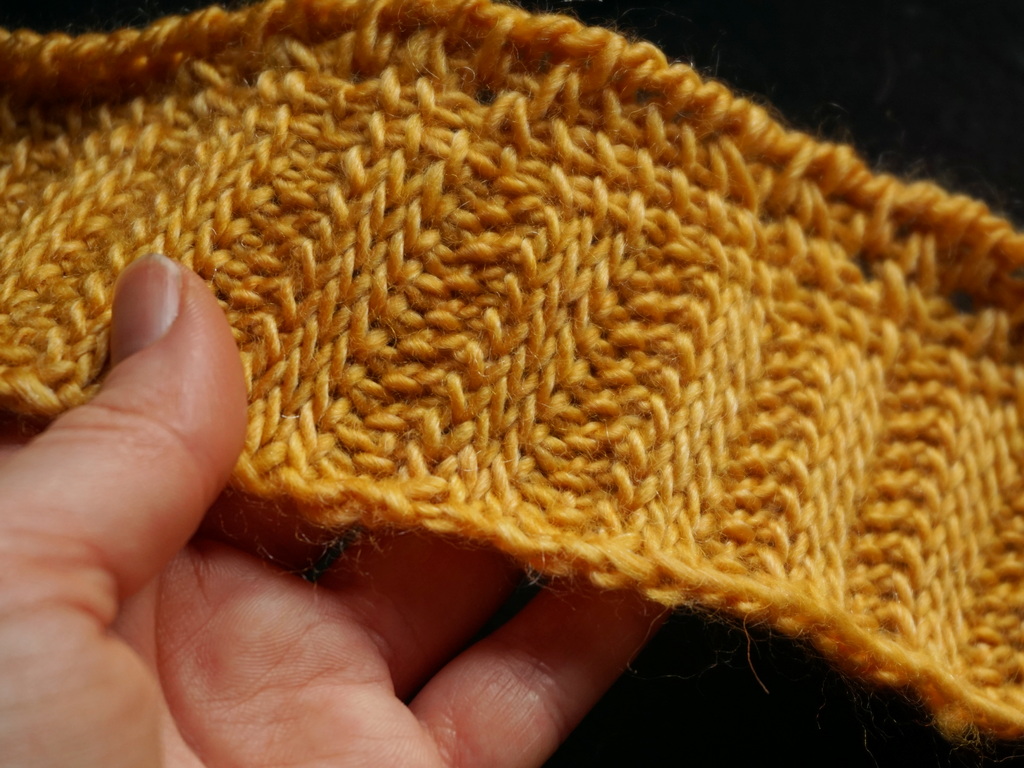
It’s going to be a pattern with a honeycomb lace motif pretty soon, and this is just the ribbing and two rows of the pattern.
Thankfully, the yarn I chose (Lana Grossa Basics Tecwool, 65% wool and 35% Tencel) is very malleable with steam and possibly water when I’m going to wet block the whole thing.
Only use this kind of ribbing with yarn you know you can block, otherwise it will curl!
Tunisian crochet ribbing version 5 – Alternating rows of Tss and Trps
Similarly to the first version, this one is also worked sideways along the edge of a project and is completely non-curling.
In sideways projects, you can include this ribbing in the length of the rows, so you work it at the same time as the main fabric.
Or you could make the whole thing ribbed.
The nice thing about this ribbing is that it is elastic and looks almost the same on the front and back of the fabric.
This makes it perfect for garments and for collars, especially those that tend to get turned, like a cardigan collar.
In the photos below, you see the same cuff right side out and then inside out. You can also see how it is a little elastic.
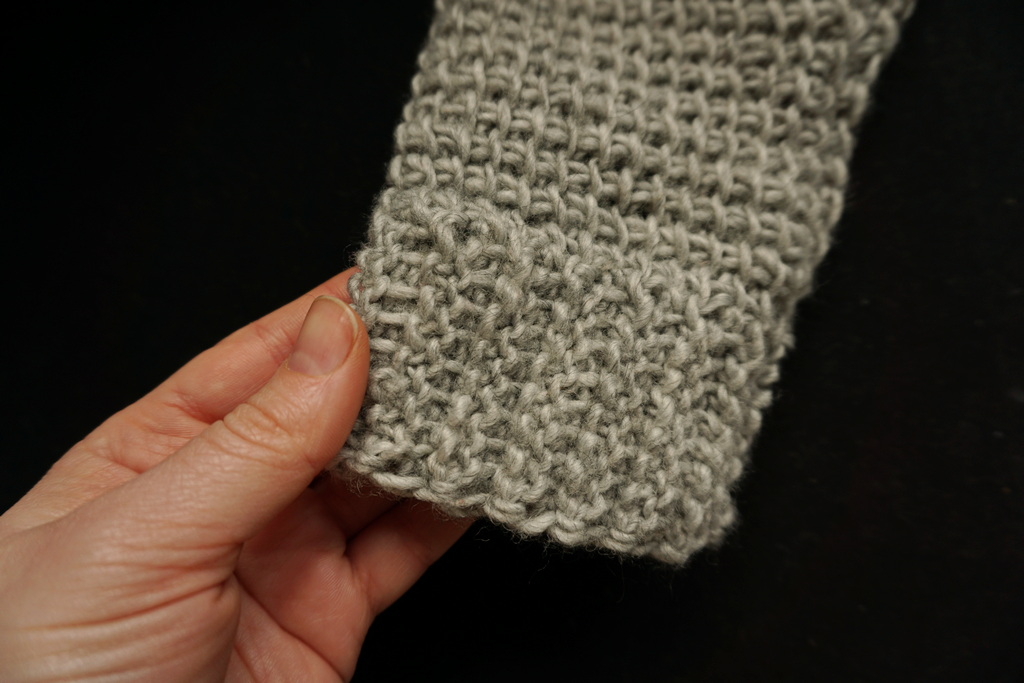
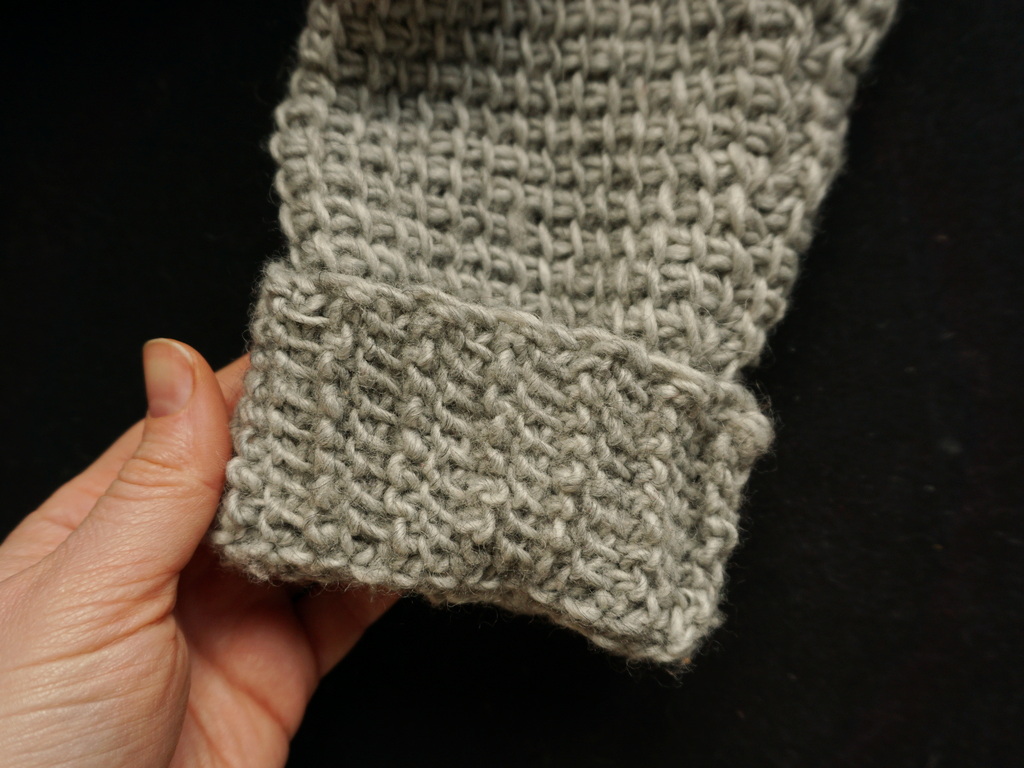
Trps stands for Tunisian reverse purl stitch.
Here’s the pattern for this type of elastic ribbing:
Row 1. Foundation Tss, as many as you need or want.
Row 2. Trps across, last stitch, return pass
Row 3. Tss across, last stitch, return pass
Repeat Rows 2-3 across the side of your project.
The last stitch in this case can be a loop picked up in the side of a project and in that case you will use the short row return pass.
This is how elastic this rib is in the cuff shown above:
Tunisian crochet ribbing version 6 – Alternating 2 rows of Tss and 2 rows of Trps
The last method for making an elastic cuff that looks the same on both sides, using a regular Tunisian crochet hook, is the one that looks very much like the reverse ridge stitch in knitting, which is also an elastic pattern.
Unlike the 3 Tks by 1 Tps rib, this one is elastic because it is worked in rows and the stitches have a tendency to curl inwards.
Since Trps is almost the opposite of Tss (if you look closely, the stitches look mirrored, instead of identical) and Tss curls, the fabric made with Trps will curl in the opposite direction.
In knitting, the same thing is accomplished by making 3 rows of stockinette and 3 rows of reverse stockinette.
This ribbing is made using the following very pattern:
Row 1. Foundation Tss, as many as you need or want.
Row 2. Tss across, last stitch, return pass
Row 3. Trps across, last stitch, return pass
Row 4. Trps across, last stitch, return pass
Row 5. Tss across, last stitch, return pass
Repeat Rows 2-5 across the side of your project.
The second row is a row of Tss because we want 2 continuous rows of the same type of stitch.
Since the foundation is the equivalent of 1 row of Tss, this is the logical sequence.
As you can see from the video and the screenshot below, this type of ribbing is really elastic and could potentially have a lot of uses where elasticity is required.
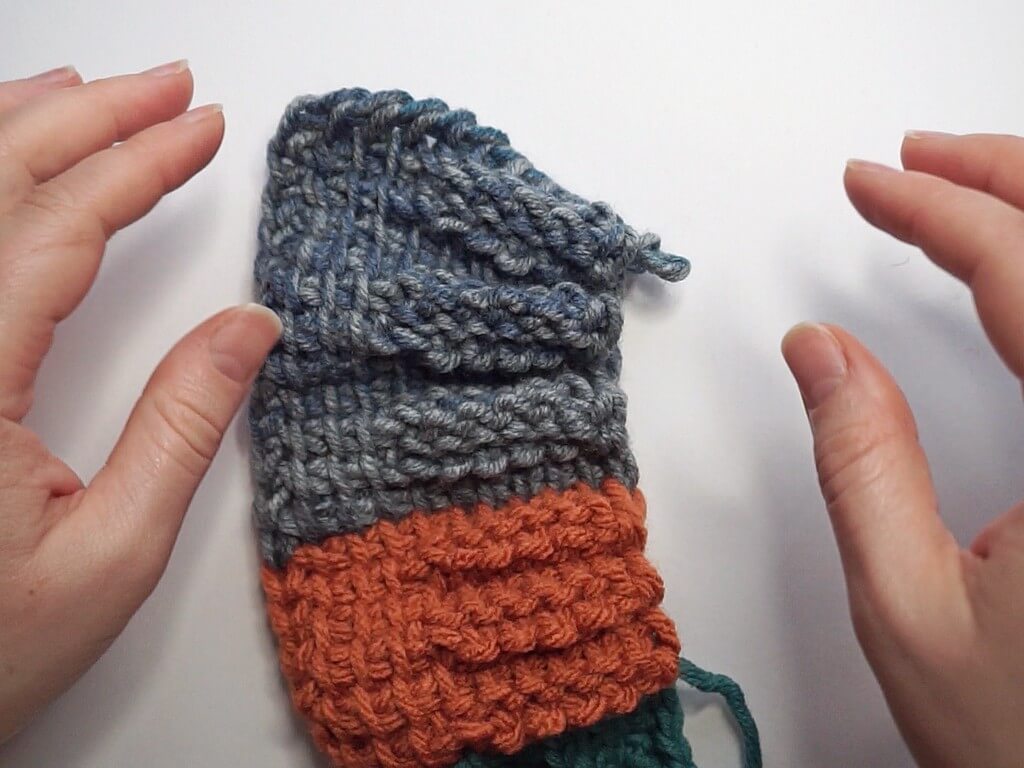
Just like the type of ribbing above, it looks almost the same on both sides, so it is suitable for any use that shows both sides of the fabric.
I don’t currently have a pattern that uses this very elastic Tunisian crochet ribbing pattern, but I’ve been sitting on an idea for a year now and it’s potentially time to make it reality.
If you’ve ever seen those wasp nest-like hats that are knit using the reverse rib, which look horrendous, but are super warm, imagine something like that, but bigger and not a hat.
I’ll update this post once (if ever) that pattern becomes reality.
Until then, I hope you enjoyed the 6 (plus 1 bonus) ways of making ribbing in Tunisian crochet with a regular hook (or a hook with a cable, but in any case, not a double ended hook).
You can definitely attach some of these types of ribbing to projects worked with double ended hooks and you can even work some of these in the round with double ended hooks (in a tube, I’m not responsible for things not working if you decide to include shaping).
Let me know in the comments which stitch pattern you like the most and which one you’ll use for your next project.
If you want to try out more stitches or techniques, check them out in the Tunisian crochet category here:
Feather and fan Tunisian crochet pattern for a washcloth
Tunisian crochet asymmetrical rounded triangle shawl tutorial
How to start a Tunisian crochet project in a magic ring
How to make different shawl shapes in Tunisian crochet
How to sew Tunisian knit stitch row to row
How to make a Tunisian crochet mosaic bee potholder
Free pattern for leaf lace Tunisian crochet bandana
Tunisian crochet houndstooth pattern for fingerless mittens
Tunisian crochet in the round tutorial with free pattern
Free Tunisian crochet fingerless mittens pattern
If you want to keep up with other projects and patterns I create, make sure to subscribe to the email updates that I send out on most Fridays.
Lots of hugs,
Andrea

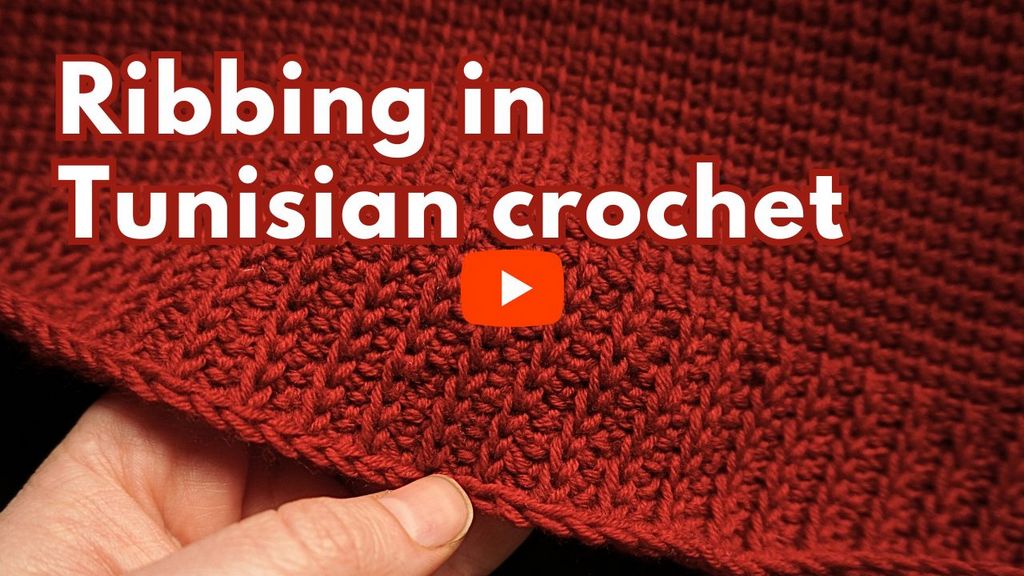
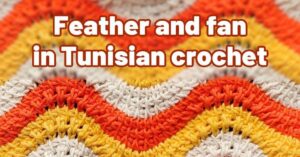
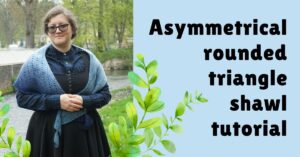
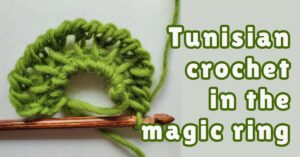
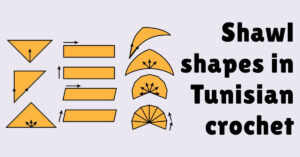
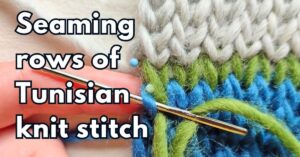
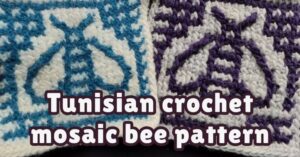
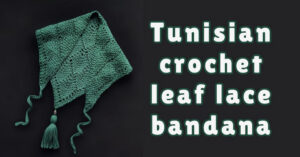
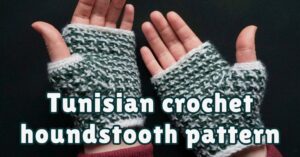
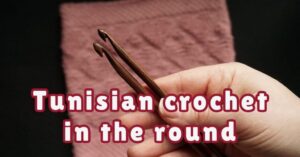
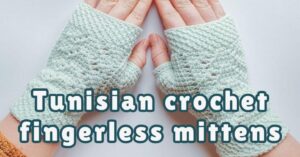

Thank you so much for putting this together, Andy. Love the compare and contrast. This will allow me to modify a pattern and pick the best ribbing method.
Yep, that’s one of the reasons why this article exists, Anita. I hope you find the best type of ribbing for your needs!